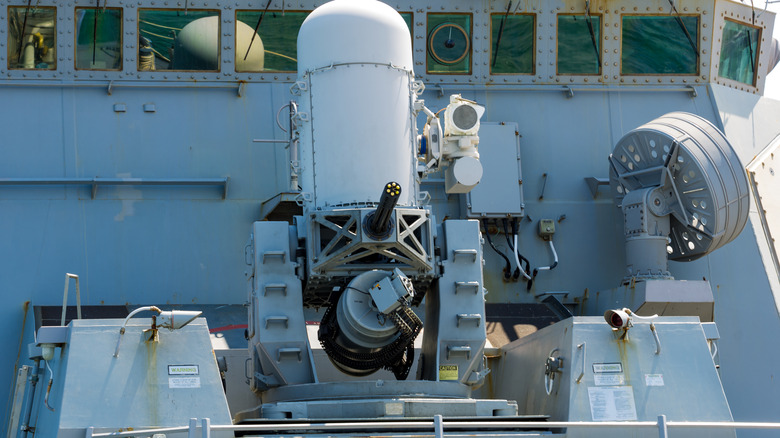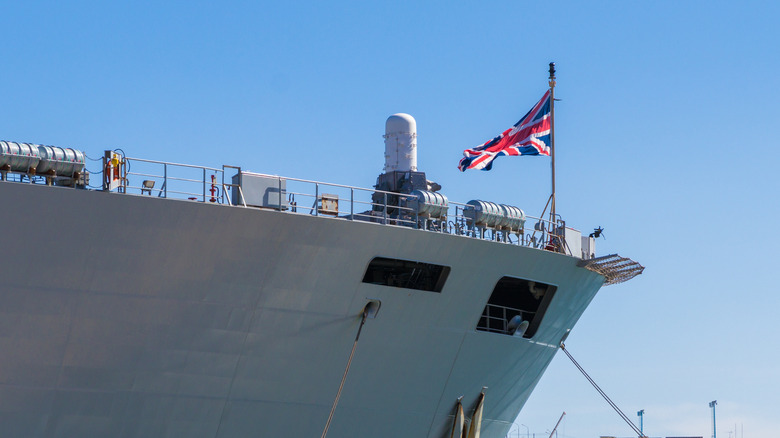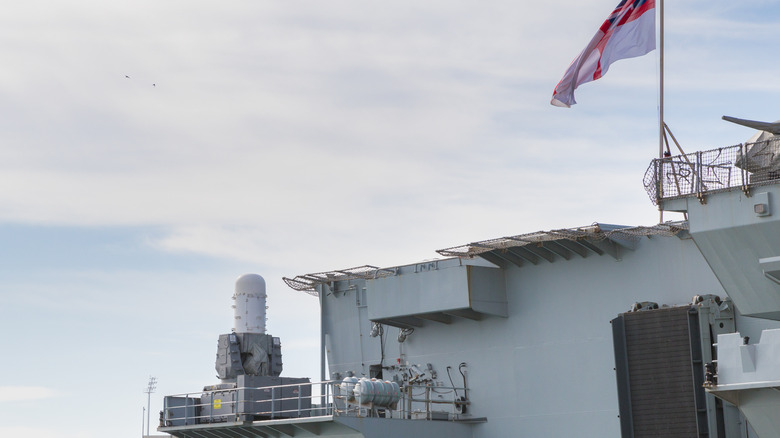Phalanx CIWS Explained: How The Navy's Computer-Controlled Weapon Works
There's certainly an argument that giving a computer too much control over any aspect of our lives is a dangerous thing. One day, they're developing the CPUs of other computers, and the next, they might well decide that human beings as a whole are surplus to their requirements. For now, though, computer-controlled systems are of enormous value, especially in the world's armed forces. The state-of-the-art Phalanx CIWS is a great example of this.
In military history, a phalanx was the term for a tightly-packed infantry formation, in which each member was able to protect the adjacent one with their sizable shields. It created a defense that was difficult to penetrate, and that very concept is at the heart of the CIWS, or Close-In Weapon System, too.
The Navy's most formidable ships, such as aircraft carriers, boast a suitably varied range of defenses. Not only in the shape of the aircraft that accompany them, but also with radars, sensors, jamming devices, and substantial armaments of their own. No vessel can guarantee to divert every attack, however, and this is the CIWS' purpose: To catch any attack that slips through other defensive measures.
The Raytheon Systems Company (previously the Hughes Missile Systems Company) was contracted to develop the CIWS. The company describes it as a "last line of defense," and from the beginning of development, it proved to be a very potent one.
The history of the Phalanx CIWS
Prototypes of the original version of the Phalanx, Block 0, were very successful when tested in the early-to-mid 1970s. It was first tested aboard the USS King in 1973, and then again on board USS Alfred A. Cunningham two years later. In both cases, it was able to detect and destroy a variety of missile types launched against it. The USS Coral Sea, a venerable aircraft carrier that entered service in October 1947 and lasted until it was scrapped in 2000, made history of the first vessel to be fitted with the Phalanx system, in 1980.
The system exceeded expectations to such a degree, Raytheon boasts, that it's in service with no less than 25 nations around the world. The United States trusts it so much that it's installed on all vessel classes that can make practical use of it. What makes it so very effective at its job, though?
How does the Phalanx CIWS work?
Essentially, the Phalanx is a very sophisticated Gatling gun or cannon. An M61 Vulcan autocannon, to be precise, is equipped with Ku-band radar, sensors, and a computer connected to its prominent antennae. The computer, as is so often the case in such devices, is the core brain of the operation: It allows the device not only to detect incoming danger, but to determine its position, distance, and other vital variables.
Larger ships can face a wide range of varied threats, from the sea, air, and land alike, and so it's crucial that defensive devices such as the Phalanx can quickly parse all the details, thereby allowing it to strike back accurately and appropriately to neutralize the danger.
This it can absolutely do, with its potent Vulcan able to launch up to 4,500 shots in a single minute. It's able to maintain this rate of fire, too, rotating ammunition to its barrels electronically and utilizing both air and water cooling where appropriate for its components. Though the Phalanx is capable of doing the full job from detecting to aiming and firing automatically, users can also ensure that it launches its salvo only when authorized to.
Its widespread adoption, as well as the utilization of the Centurion C-RAM, an adapted Phalanx that defends targets on the ground, demonstrates how effective the device has proven. Compact and convenient, capable of taking on the roles of various devices in one, it nonetheless has to keep up with improvements in missile technology. This is why subsequent Phalanx models (such as the Block 1 in 1988 and the Block 1B in 1999) have added new sensors, improved tracking, and other improvements.


